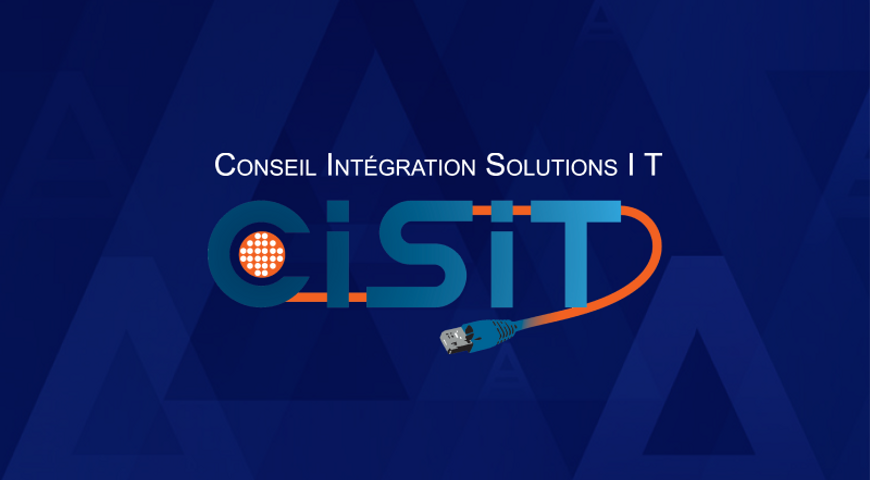
Modern businesses rely on a comprehensive IT environment to procure services and solutions. The larger the system, the bigger the attack surface it will present to malicious actors to try and penetrate company defenses. As company networks interact with people and countless endpoints, vulnerabilities may arise in different network areas and compromise your business processes and critical data.
System vulnerabilities aren't a problem on their own. However, these flaws can quickly become a full-blown data breach if cybercriminals exploit them. This is why identifying vulnerabilities and fixing them is necessary to detect weaknesses in your defenses, minimize risk exposure, and secure critical systems.
Below, we will explore vulnerability remediation, how it works, and how to implement it in your vulnerability management process.
What is vulnerability remediation?
Vulnerability remediation identifies, addresses, and neutralizes security vulnerabilities within a company's IT environment. This environment can include devices (computers, laptops, mobile devices), digital assets, web applications, networks, and systems.
Modern businesses rely on increasing data volumes to procure their services, with digital risk management affecting how many organizations approach the vulnerability management process. Many companies face remediation challenges because they're not employing the most adequate policies, measures, and strategies to conduct optimal vulnerability remediation. Some businesses decide to all-in their resources on the wrong remediation efforts — this slows down their systems, hinders business processes and negatively impacts revenue.
Dedicated vulnerability management programs can help companies negate cyber threats to a point where a security gap is either fixed, invisible to attackers, or is too insignificant to invoke an exploit.
Now, let's dive into the specifics of a robust vulnerability remediation process.
How does vulnerability remediation work?
The vulnerability remediation process focuses on identifying and continuously neutralizing potential security risks. Your remediation team can procure comprehensive vulnerability assessments to include them in a structured remediation approach and minimize the chance for data breaches, data loss, malware, phishing, DDoS attacks, and more.
A sensible vulnerability management program requires dedicated collaboration between multiple teams within the company. Operations, compliance, security, risk management, and the organization's development teams should all be on the same page regarding a cost-effective and reliable strategy to fix critical vulnerabilities via the right tools.
Vulnerability management solutions can aid your teams in incorporating top-tier threat intelligence, data science tactics and automated predictive algorithms to detect, prioritize and remediate identified vulnerabilities.
Typically, your vulnerability remediation team would cover four primary steps to enable an effective remediation process:
- Initiating a regular vulnerability scan to find known and new vulnerabilities.
- Designing a prioritize-based approach to assign risk scores and rank vulnerabilities based on their severity
- Eradicating weak points until they pose little to no risk to company systems
- Actively monitoring the company's IT environment to track progress, maintain a low-risk level, uphold remediation requirements, and come up with efficient ways to tackle newly discovered vulnerabilities
In the next section, we will explore the vulnerability management process in-depth, step by step.
What is a vulnerability management program?
A vulnerability management program collects vulnerability data, analyzes it, and proposes remediation steps to fix detected weaknesses. Responsible teams can follow the four primary steps of the approach to streamline the process and raise efficiency.
Discovery
Vulnerability remediation begins with collecting vulnerability metrics to identify possible vulnerabilities on the company network. Those can be software misconfiguration, coding flaws, poorly protected endpoints, flawed authentication processes or security controls, and more.
Automated vulnerability scans can identify known vulnerabilities to provide your security team with basic information about the potential threat. However, automated reports rarely include complex threat prioritization. Additionally, such an approach typically doesn't discover all potential vulnerabilities.
On the other hand, vulnerability assessment, monitored by your security team, can evaluate the entire system, search for high-risk vulnerabilities, and provide the information required to classify, prioritize, and correct discovered weaknesses.
It's best to utilize multiple detection and remediation resources to reduce false positives and test your systems efficiently. Those include but are not limited to, real-time threat intelligence, predictive algorithms, data science software, open-source vulnerability tools, software composition analysis (SCA) tools, and more.
Vulnerability prioritization
Nearly 80% of discovered vulnerabilities turn out to be false positives. Another 20% are typically deemed benign soon after identification. Nonetheless, a small percentage of high-impact vulnerabilities can significantly affect your organization if exploited by cybercriminals.
Risk-based vulnerability management (RBVM) will assign a risk level to every discovered vulnerability, ranging from critical to low. Typically, your security teams prioritize vulnerabilities based on severity, coverage, and resolvability. This approach helps remediation teams to collaborate more efficiently, optimize the organization's resources, and correct vulnerabilities more adequately.
Companies can assign risk-based priority automatically or manually during the first stage. Many businesses rely on the Common Vulnerability Scoring System (CVSS) to outline the severity and specifics of identified vulnerabilities. CVSS can calculate severity scores based on the targeted attack vector, the complexity of the attack, and its potential impact on the protected network.
However convenient, automation isn't enough to remediate all potential vulnerabilities. A robust vulnerability management process relies on seasoned security engineers fluent in contextualized prioritization to easily focus resources where they're most needed and address the most pressing issues first.
One of the most critical key performance indicators (KPIs) of vulnerability management strategy is the number of high-risk vulnerabilities remediated before company assets and critical systems were affected. RBVM considers external and internal threats, vulnerability scan data, and the company's risk tolerance to enable a prioritize-based approach. Upon detection, companies must decide how to interact with potentially harmful cybersecurity risks - whether to accept, mitigate, or remediate them.
Accepting the risk translates to ignoring a vulnerability with a minimal risk level, undeserving of patch deployment. Mitigating the exposure relates to reducing the chance of cyber actors exploiting it. Remediation is the final option, ensuring the vulnerability is resolved and can't be exploited by malicious actors.
Below, we will go into the remediation process in-depth to give you a better understanding of it.
Remediation
After identifying and prioritizing security gaps, the vulnerability remediation process aims to neutralize weak links in your system by deploying patches, updating, upgrading, or disabling a vulnerability. In high-risk scenarios, it's necessary to entirely remove faulty components to protect critical apps or production systems.
Common vulnerabilities will often include SQL injections, an unpatched operating system (OS), poorly secured account credentials, device misconfiguration, cross-site scripting (XSS), Insecure Direct Object References (IDOR), and more.
Database admins typically fix database-related vulnerabilities; DevOps teams will secure application vulnerabilities. However, some scenarios may be more challenging than others. For example, the patching process to fix a software vulnerability relies on your IT department or software vendors. If they haven't prepared a patch for the corresponding vulnerability, it will take time before a fix is ready for deployment.
Depending on the attack surface, the current threats, and the risk tolerance, IT teams typically can either automate updates and patching, rely on dedicated patch management tools, or deploy patches manually. The latter is critical for resolving vulnerabilities with cascading dependencies (regarding security controls), but it is usually considered a last-resort approach.
The remediation process may take an extended period depending on the potential impact and required steps to fix a vulnerability. Some patches may require companies to shut down their operations entirely during deployment, which can lead to downtime and hindered revenue stream. Organizations must plan for the remediation process accordingly to minimize the negative impact on their performance. Sometimes, it may be better for development teams to issue a temporary patch to keep services running until a proper update is provided to remediate vulnerabilities for good.
Continuous monitoring
The fact that all vulnerabilities are fixed doesn't mean the process is completed. Vulnerability remediation is a perpetually ongoing process, and its last step is constant, real-time monitoring. Responsible teams must also focus on data logging, exporting reports on vulnerability data, and scanning for new emerging vulnerabilities. Companies should rely on dedicated monitoring tools to ensure quick alerts and notifications, so teams can respond instantaneously to new vulnerabilities.
The good thing about dedicated monitoring software is that it also provides identification and risk-based prioritization features to aid teams in the first two steps of the process.
Monitoring often leads to retesting, where teams repeatedly scan the target system until every vulnerability is remediated. Moreover, a dedicated monitoring and scanning tool can provide detailed patching reports and compliance data to ensure the company is compliant with regulatory standards.
What are the differences between vulnerabilities, risks and threats?
Understanding the difference between vulnerabilities, risks, and threats is critical for your cybersecurity approach.
What is a vulnerability?
In cybersecurity, a vulnerability is a flaw, weakness, or shortcoming in a device, process, database, software, infrastructure, system, or network (or a set of specific controls) that cybercriminals can exploit. Common vulnerabilities can be quickly addressed via patching or updates, but newly discovered vulnerabilities would require in-depth remediation tactics.
If vulnerabilities are left unattended, they can be exploited by sophisticated threats, so threat actors can gain unauthorized access and harm the company network. Organizations must identify and remediate vulnerabilities to reduce the risk of being negatively impacted by threats.
Generally, there are two types of vulnerabilities:
- Technical vulnerabilities
These are shortcomings in software or hardware, such as flawed code, application bugs, or hardware or software errors.
- Human vulnerabilities
These are linked with the human element in any target system or network. Employees can fall victim to phishing emails, smishing, or other common attack vectors. They may also accidentally share their account credentials or leave an endpoint unsecured, waiting to be infiltrated.
Companies must identify and address both vulnerability types to counter internal and external threats.
What is a risk?
Here, "risk" is associated with the potential for an adverse event to occur on your network due to an exploited vulnerability or human error. A risk-based approach to vulnerability remediation will consider the likelihood of an exploit successfully compromising a weakness and the potential negative impact it will cause on your network, business processes, and revenue.
Understanding vulnerabilities on your network is mandatory to manage and minimize risk properly. The process involves estimating the frequency of potential attacks via risk assessment, the effectiveness of network defenses, and determining the potential loss value if an incident occurs.
In essence, "risk" is a comprehensive combination of an existing vulnerability and lurking threats that may exploit said weakness. You can also view it as the probability of a successful attack multiplied by its potential aftermath.
A dedicated data protection strategy is a must to maintain optimal risk management. Your protection system can identify and reduce risk and monitor the progress of your risk management program.
What is a threat?
Cyber threats are any potential danger or malicious action that could exploit an existing vulnerability in data, apps, people, systems, networks, or other digital assets and negatively impact your company's integrity, confidentiality, or availability of products, services, or solutions.
Common cyber threats are viruses, malware, phishing, ransomware, and other evolving threats. Essentially, a threat can be perceived as an attacker or malicious actor who can potentially compromise your business operations, digital assets, workforce, customers, clients, and, ultimately, brand image and revenue.
Cyber threats are divided into three primary categories:
- Unintentional threats
The first type of threat often occurs due to human error. For example, an employee can leave their account password on a sticky note near their computer, providing an attacker with credentials to gain access to sensitive company information.
- Intentional threats
The second type of threat is often caused by malicious actors trying to compromise and breach a security (or software) system. For example, cybercriminals can send out mass emails containing corrupted attachments (phishing); employees can open the email, engage the attachment, and download ransomware onto their computers. The malicious code can then spread over and harm your network until the breach is contained.
- Natural disasters
The third type of threat is unpredictable by cybersecurity software. Floods, fires, earthquakes, hurricanes, and other natural disasters can damage and compromise your company's physical (and, thus, digital) assets.
Companies must plan and prepare for all types of threat scenarios, as each can negatively impact a business.
Remediation vs. mitigation: What are the differences?
Understanding the difference between mitigating and remediating vulnerabilities is crucial to protect your company's data better. In essence, remediation completely removes a threat when possible, while mitigation reduces the impact of a threat when remediation is not applicable.
Let's explore both terms below.
Remediation
Vulnerability remediation studies attack patterns and focuses on pinpointing flaws corresponding to known threats to patch a vulnerability, thus preventing cybercriminals from exploiting it.
The ultimate goal of vulnerability remediation is to close security gaps to reduce the potential attack surface of the target network and deny access to threat actors.
Remediation tasks vary from deploying a single patch to replacing a host of physical servers across the whole business network. Following successful remediation, teams should scan the system again to ensure the vulnerability is resolved.
Mitigation
Sometimes, a vulnerability can't be removed entirely. In such a case, cybersecurity specialists would focus on reducing the threat impact as much as possible.
Mitigation follows a strict risk assessment process to determine a threat's potential impact and justify remaining risks. Via mitigation, a company can leave a vulnerability "active" for a specific period if the vulnerability doesn't invoke additional risks.
Vulnerability scanning vs. penetration testing
Even though vulnerability scanning and penetration testing are often used interchangeably, there's one significant difference between the two. And it lies in the way they're piloted.
Vulnerability scanning
A vulnerability scanning tool is an automated solution that monitors and assesses your apps, system, or network for common vulnerabilities and exposures (CVEs) or known vulnerabilities. A company can initiate vulnerability scans and generate a myriad of reports pointing to potential vulnerabilities. Such reports are typically required for specific compliance standards. (e.g., GLBA, PCI-DSS)
Penetration testing
Unlike automated scans, pen tests are a manual process of vulnerability "hunting." Here, an ethical hacker uses a range of tools, such as password crackers, SQL injections and other means of compromise, to simulate a cybercriminal exploiting the security gaps in a system to identify and remediate them.
How can businesses prioritize identified vulnerabilities?
An effective vulnerability remediation process relies on prioritization. Without it, companies can waste time and effort on low-level security flaws instead of tackling high-level ones. Prioritization enables organizations to allocate resources, address threats, and minimize their attack surface efficiently.
The six primary factors in vulnerability prioritization are Asset Data, Severity, Exploitability, Potential impact, Threat Intelligence, and Business context. Let's explore them below.
Asset Data
Classifying your digital assets by importance will help you understand and calculate the potential impact of a vulnerability and quicken your prioritization process.
Here, companies should aim to answer the following questions:
- Who is responsible for the particular asset?
- What function does the asset have within your business?
- What is the asset's operational or financial worth?
Severity
Severity is an essential factor in your vulnerability assessment process. The more severe a vulnerability is, the more significant the potential impact it may have on an app or a network.
Severity is typically measured via the Common Vulnerability Scoring System (CVSS). CVSS scores range from 10 to 0; higher scores indicate a more significant severity level.
It's important to note that CVSS scores aren't the sole factor in determining severity. Several low-rated flaws can often create a domino effect and compromise a network as much as a high-severity vulnerability.
Exploitability
Exploitability determines how likely an attacker will take advantage of a vulnerability. The calculation can depend on the skills and resources needed to exploit the vulnerability, the availability of exploit code, the potential benefit for the cyber actor and more.
A vulnerability with known exploits (or one that is easy to exploit) should be prioritized as it poses a more significant risk to your business.
Potential impact
If exploited, a vulnerability can open the way for data loss, downtime, financial loss, reputational damage, etc. The impact of an exploit will vary depending on the affected data or system or your company's overall cybersecurity posture.
Here, it's best to prioritize weaknesses that could cause the most harm if exploited.
Threat intelligence
Threat intelligence enables companies to identify security flaws currently being exploited globally. Integrating threat intelligence into your vulnerability assessment can identify weaknesses that pose an immediate threat. This way, your security teams can focus their remediation efforts on critical vulnerabilities first and minimize (or eradicate) the threat of a vulnerability exploit.
Business context
Any vulnerability can affect your company's objectives and regulatory compliance requirements. However, some security flaws can have a bigger impact than others.
Here, companies should consider the importance of an affected data or system, the potential for regulatory aftermath (fines, penalties), and the potential negative impact on customer satisfaction and trust.
Using the above factors to optimize your vulnerability remediation process will also help your risk-management strategy.
How can organizations improve their vulnerability remediation process?
Fixing vulnerabilities sounds simple - you detect a weakness, determine it requires remediation, fix it, and test to ensure a positive result. However, a reliable vulnerability remediation process relies on several factors to function at the top of its game.
Let's explore them below.
Risk over Numbers
An effective vulnerability remediation process relies on prioritization. Suppose your company threats all vulnerabilities the same, trying "to fix everything". In that case, you may leave a high-threat exposure unattended long enough for it to become a full-blown breach.
It's critical to rely on a risk-based vulnerability management program to address the most pressing vulnerabilities first.
Mobile workforce
Traditional vulnerability scans are becoming less efficient in today's hybrid work environments. Implementing agents to complement powerful hardware and limited-trust endpoint security can yield better results and protect your mobile workforce.
Streamline the solution
Gathering endpoint data via multiple tools can often increase the complexity of the process. It can also confuse your teams because two or more tools rarely provide the same information regarding system vulnerabilities. Here, finding a solution encompassing all needed vulnerability management features to pilot the program from a single, centralized console is best.
Proper governance
Gathering key information and the proper protocols is a stepping stone for every efficient vulnerability management process. An experienced cybersecurity governance committee can aid in creating a standardized guideline to help your technical staff with effort and vulnerability prioritization.
Patience
Vulnerabilities and remediation steps are different depending on the threat scenario. The teams dealing with them are too. Companies should approach vulnerability management one step at a time. Depending on your preferences and vulnerability risk scores, it's best to fortify infrastructure or application vulnerabilities first and then move to the other.
Vulnerability remediation best practices
An outdated approach to vulnerability management will often yield suboptimal results when dealing with sophisticated threats to an ever-evolving IT network. Remediating vulnerabilities via best practices will increase efficiency and help your company counter modern threats in the long run.
Understanding IT infrastructure
Large companies pilot massive hybrid IT infrastructure, and traditional vulnerability management strategies aren't equipped to fulfill their needs. The rise of remote work results in more personal devices and apps connecting to a company network, which, in turn, means more endpoints that require vulnerability management. Organizations must fully understand their extended infrastructure to deal with dynamic threats.
Continuous scans
Scanning your environment once monthly or even weekly will fail to deliver current vulnerability reports. Flaws in your infrastructure can be found daily, which requires continuous scans to ensure real-time vulnerability intelligence across the entire IT network.
Strong KPIs
Key performance indicators are crucial for a robust vulnerability management process. KPIs help IT teams determine the program's effectiveness and identify issues that require immediate attention. When setting up KPIs, companies should aim to answer the following metrics:
- Scan duration.
- Scan frequency.
- Scan coverage.
- Average remediation times.
- Vulnerability lifespan.
Leverage vulnerability intelligence
Companies must take advantage of a vast vulnerability database to ensure the accuracy of the scanning process. If the database is periodically empowered with the latest vulnerability reports data, your IT team will feel confident that your scans yield the needed information to neutralize all weaknesses and gaps in your network.
Prioritization
In previous paragraphs, we've discussed prioritization as an integral part of vulnerability management. Here are some of the primary metrics to help prioritize — exploit data, CVSS scores, number of assets reporting the same vulnerability and the potential impact of the vulnerability.
Conclusion
This blog is a resource for businesses aiming to secure their IT environments. It provides a comprehensive overview of the processes involved in identifying and neutralizing security vulnerabilities, emphasizing the importance of prioritization, continuous monitoring and best practices. By addressing challenges and differentiating between mitigation and remediation, organizations are able to protect their networks, prevent data loss and ensure business continuity.
About Acronis
A Swiss company founded in Singapore in 2003, Acronis has 15 offices worldwide and employees in 50+ countries. Acronis Cyber Protect Cloud is available in 26 languages in 150 countries and is used by over 21,000 service providers to protect over 750,000 businesses.



